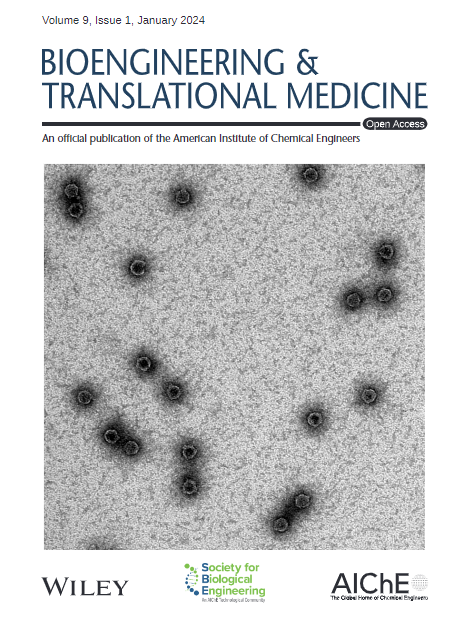Mechanical interplay between adipose tissues and disease progression
IF 5.7
2区 医学
Q1 ENGINEERING, BIOMEDICAL
引用次数: 0
Abstract
Over the past two decades, an increasing body of evidence has underscored the significant role of the mechanical properties of biological tissues in maintaining tissue functions and regulating cellular changes, such as proliferation, migration, and differentiation. Throughout disease progression, such as in cancers, bone defects, and cardiac conditions, the mechanical microenvironment of tissues can undergo dramatic changes, exerting profound effects on disease development. Adipose tissues are inherently mechanosensitive and mechanoresponsive, continually exposed to various mechanical stresses in daily life. The hypertrophy and accumulation of adipocytes can lead to obesity, a condition strongly associated with numerous health risks, like diabetes and cancers. In this review, we aim to elucidate the reciprocal mechanical interaction between adipose tissues and disease progression, encompassing cancers, bone defects, and cardiac pathologies. The existing literature suggests that alterations in the mechanical microenvironment during disease advancement may impede adipogenic differentiation, induce adipocyte dedifferentiation, and escalate the secretion of inflammatory cytokines. Conversely, dysregulation of adipose tissues can result in the deposition of extracellular matrix components, stiffening the microenvironment and fostering disease progression in a cyclical fashion. Therefore, in future treatments of related diseases, a combined approach integrating mechanotherapeutics and obesity management holds promise for achieving the desired enhanced therapeutic outcomes.脂肪组织与疾病进展之间的机械相互作用
在过去的二十年中,越来越多的证据强调了生物组织的机械特性在维持组织功能和调节细胞变化(如增殖、迁移和分化)中的重要作用。在整个疾病进展过程中,如癌症、骨缺损和心脏病,组织的机械微环境可以发生巨大变化,对疾病发展产生深远影响。脂肪组织具有机械敏感性和机械反应性,在日常生活中不断受到各种机械应力的影响。脂肪细胞的肥大和积累会导致肥胖,而肥胖与许多健康风险密切相关,比如糖尿病和癌症。在这篇综述中,我们的目的是阐明脂肪组织与疾病进展之间的相互作用,包括癌症、骨缺陷和心脏病理。现有文献提示,疾病进展过程中机械微环境的改变可能会阻碍成脂分化,诱导脂肪细胞去分化,并增加炎性细胞因子的分泌。相反,脂肪组织的失调可导致细胞外基质成分的沉积,使微环境变硬,并以周期性的方式促进疾病进展。因此,在未来相关疾病的治疗中,将机械疗法和肥胖管理相结合的方法有望实现预期的增强治疗效果。
本文章由计算机程序翻译,如有差异,请以英文原文为准。
求助全文
约1分钟内获得全文
求助全文
来源期刊

Bioengineering & Translational Medicine
Pharmacology, Toxicology and Pharmaceutics-Pharmaceutical Science
CiteScore
8.40
自引率
4.10%
发文量
150
审稿时长
12 weeks
期刊介绍:
Bioengineering & Translational Medicine, an official, peer-reviewed online open-access journal of the American Institute of Chemical Engineers (AIChE) and the Society for Biological Engineering (SBE), focuses on how chemical and biological engineering approaches drive innovative technologies and solutions that impact clinical practice and commercial healthcare products.
 求助内容:
求助内容: 应助结果提醒方式:
应助结果提醒方式:


